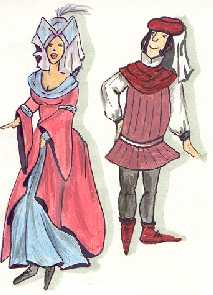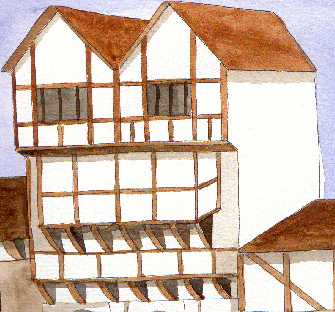|

|
|
Most of the town houses were made of wood, with plastered walls, but stone was also used.
In a merchant's house, on the ground floor there used to be a large hall, where the family used to eat and entertain the guests. But most craftmen used to have their workshop together with the shop on the ground floor. So he and his family lived on the floor above.
Upstairs was the solar, a parlour for private business and bedrooms, with an attic for the servants. They used to pave the floor with decorated tiles and hung brightly coloured tapestries on the walls. We must remember that houses were built very close together within the walls of the medieval town. That's why most streets were gloomy and airless. But to maximise space, the upper floors were built jutting out above the ground floor.
|
|







